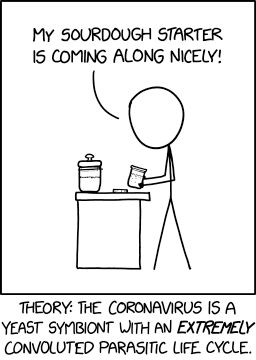Sue Dremann writing for Palo Alto Weekly:
Employees of Stanford Health Care, including doctors, nurses and technicians who are caring for COVID-19 patients, will have their pay reduced by up to 20% starting Monday, April 27, for 10 weeks, according to a tip sheet the organization sent to workers on April 21.
The medical center briefly stated it was making the cuts due to the economic impacts of COVID-19 on the organization instead of laying off employees. The "temporary workforce adjustment" program was created as part of the hospital's "cost-saving measure and initiatives," hospital administrators stated. The pay reductions will apply to all employees at Stanford Hospital, Lucile Packard Children's Hospital Stanford and, in the East Bay, Stanford-ValleyCare. Asked if the cuts included to doctors' salaries, hospital spokeswoman Lisa Kim reiterated the cuts are "across the board."
Paul O'Donnell and Kevin Krause writing for the Dallas News:
Dallas-based Tenet Healthcare is furloughing about 3,400 of its hospital workers nationally, citing lost revenue from elective surgeries being halted by the COVID-19 pandemic.
Tenet, one of the nation’s largest investor-owned hospital operators, announced the actions in a letter to employees Wednesday. CEO Ronald Rittenmeyer described the furloughs as temporary and resulting from the virus’s “acute” impact on the company’s business.
“These are difficult but necessary decisions in navigating near-term uncertainty that will eventually come to an end,” he wrote in the letter. “We remain ready to resume vital elective care in our communities once government restrictions are lifted.”
The 12-week furloughs affect 3% of Tenet’s 113,000 employees. It follows an earlier furlough of 500 corporate employees, as well as reductions in surgical center staffing at facilities closed or operating on a limited basis. The company said pandemic-related staffing cutbacks now affect about 10% of its workforce.
Dylan Scott writing for Vox
- The Cookeville Regional Medical Center in Tennessee will be furloughing 400 of its 2,400-person staff, and a few hundred others will see a cut in their hours, Fox 17 Nashville reports.
- Boston Medical Center is furloughing 10 percent of its staff, about 700 people, according to the Boston Globe.
- Trinity Health Mid-Atlantic, which runs five hospitals in the Philadelphia area and employs 125,000 people there, will furlough an unspecific percentage of its staff, per the Philadelphia Inquirer.
- Mercy Health, the largest health system in Ohio, is temporarily laying off 700 workers.
- Two hospital systems in West Virginia are furloughing upward of 1,000 employees combined, Metro News reports.
- The largest hospital system in eastern Kentucky is laying off 500 workers, according to the Lexington Herald-Leader.











